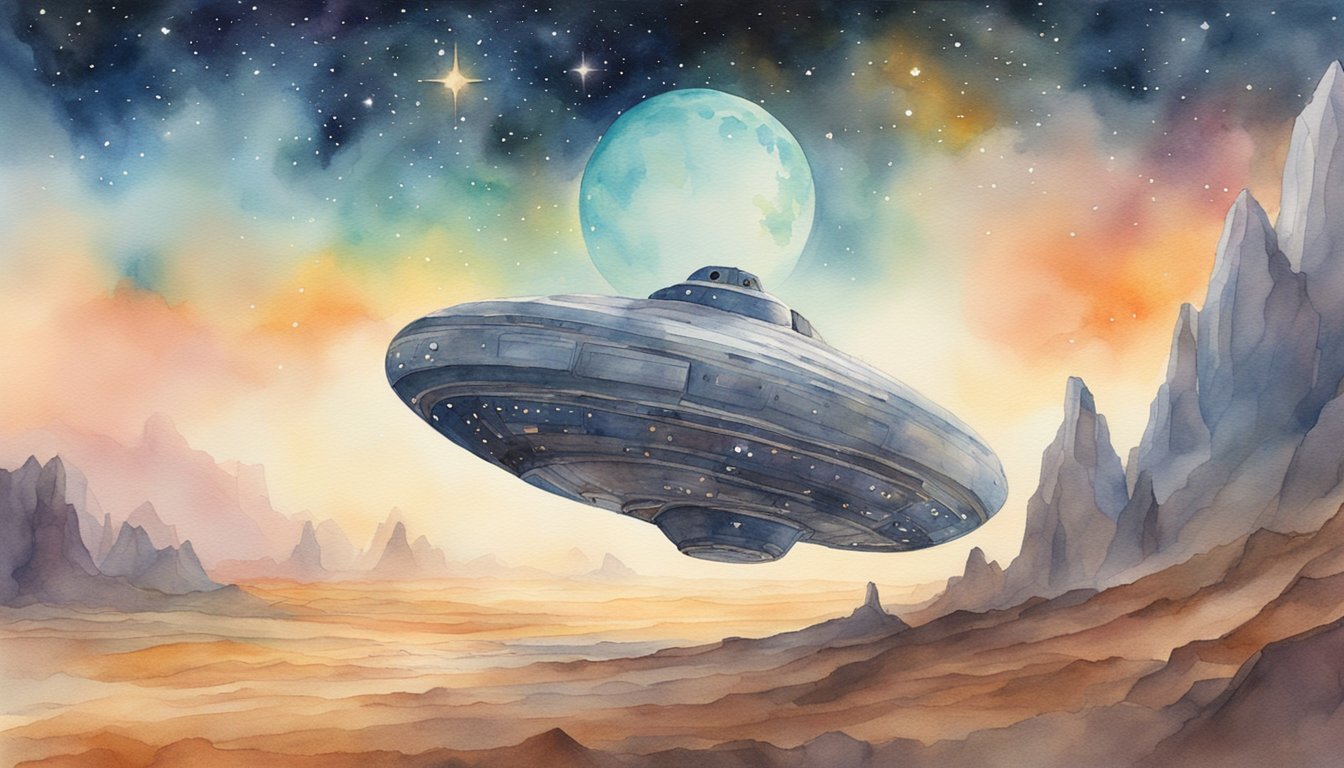Habitable Worlds and Alien Life
The pursuit of extraterrestrial life is intertwined with the discovery of habitable worlds beyond Earth. The conditions that permit life as we know it hinge on a delicate balance of planetary features, many of which have been identified on various exoplanets and moons in our galaxy.
Planetary Conditions for Life
Criteria for life-sustaining conditions are not just about liquid water, although it’s a critical component. An earth-like planet or moon also needs an atmosphere that can maintain a stable temperature. This stability typically requires the presence of an atmosphere with gases like oxygen and often traces of methane, believed to be indicators of biological processes. Take Mars, for instance, with its evidence of ancient rivers and lakes, it captures imaginations as a place where life might have once thrived.
Discoveries of Exoplanets and Moons
Thanks to advancements in space telescopes and the transit method, where planets are observed as they cross in front of their stars from our vantage point, astronomers have cataloged thousands of exoplanets. Exciting discoveries like the Enceladus, Saturn’s moon, with its subsurface ocean, piqued curiosity because of water’s key role in supporting life. Stellar examples include the TRAPPIST-1 system where several earth-like planets have been identified. Telescopes like those on Mauna Kea in Hawaii play a pivotal role in such discoveries, making the search for alien life more promising than ever.
Could Understanding Alien DNA Provide Insights Into Whether Humans Are Aliens?
Exploring the potential of alien DNA could lead us to groundbreaking revelations about our origins. If researchers can discover the genetic mysteries of extraterrestrials, we might uncover parallels that challenge our understanding of human ancestry. This quest could finally answer whether humans are truly alien in nature.
Humanity’s Place in the Universe

The search for humanity’s place in the cosmos often intersects with questions of our origin and relationship with a universe that is vast and, as far as we know, unique. It challenges the idea of Earth as the center of the universe, a concept once widely accepted by civilizations influenced by geocentric views in religion and philosophy.
Civilization and the Cosmic Perspective
As humans on Earth, they have long gazed at the stars, pondering their existence within the Milky Way and the greater universe. This introspective journey, a bridge between astrobiology and philosophy, has led many to consider the possibility of life beyond Earth. Carl Sagan, a pioneer in popularizing the cosmos, often spoke about the humility and unity that comes from understanding Earth’s place in the vast cosmos.
The study of life on Earth and the environmental conditions that support it has provided astrobiologists with a blueprint for searching for alien civilizations. The fact that Earth orbits the Sun in a habitable zone where water can exist in liquid form is one of the key factors that makes life possible here. By extending this knowledge, they hypothesize about the conditions on distant exoplanets around other stars that might also be capable of supporting life.
The concept of humans as ‘aliens’ on their own planet challenges one to view themselves from a cosmic perspective, emphasizing interconnectedness and pushing the boundaries of traditional anthropocentrism. Humanity’s comprehension of the universe has expanded with their knowledge of the cosmos, reshaping the collective understanding of their place within it, and, possibly, among other civilizations.
Linking to the relevant information from the original search result: The philosophical work The natural alien: Humankind and environment reflects on the idea of temporarily suspending belief in a world of separate entities. This encourages a thought that when examining the universe, humanity may find a connection to something greater than itself and, in turn, view human beings in a new light—not as central and separate but as part of a vast and potentially populated cosmos.

